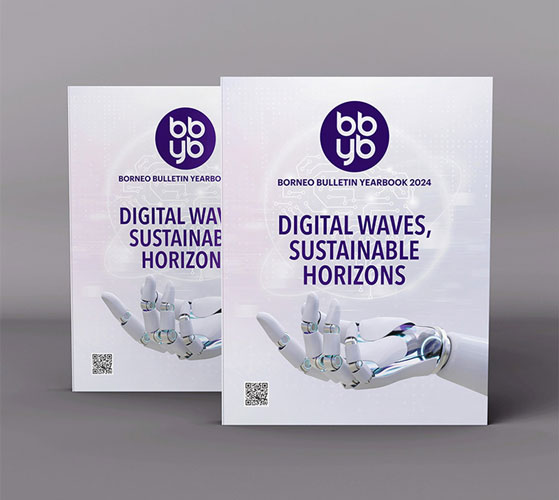ASEAN+3 in a time of tariff turbulence
The ASEAN+3 Macroeconomic Research Office (AMRO) recently released its flagship report, the ASEAN+3 Regional Economic Outlook (AREO) 2025, in the wake of the United States’ (US) sweeping tariff hike announced on April 2.
These new measures, dubbed the “Liberation Day tariffs” in the report, have intensified global trade protectionism and introduced heightened uncertainty into the economic environment.
But even amid such turbulence, AMRO’s report underscores a critical point: the ASEAN+3 region-comprising the 10 ASEAN member countries plus China, Japan and Korea – stands more resilient and better prepared than ever before.
“The announcement of elevated and broad-based tariffs by the US, and the developments since, have added significant layers of complexity to the ASEAN+3 region’s outlook,” said AMRO Chief Economist Hoe Ee Khor.
“Nevertheless, ASEAN+3 economies today are more resilient and diversified than during past global shocks and better positioned to navigate the unfolding tariff shock.”
According to the report, 13 out of 14 ASEAN+3 economies are now subject to some of the highest effective tariff rates under the new US policy, with the trade-weighted average reaching an estimated 26 per cent, excluding China.
This stark escalation of protectionist policy follows a broader trend: the US presidential election cycle has revived a populist push for economic nationalism, disrupting global value chains and injecting fresh volatility into already fragile global trade dynamics.
AMRO’s scenario analysis paints a sobering picture. If the new tariffs persist and are met with retaliatory measures, regional gross domestic product (GDP) growth in ASEAN+3 could dip below 4.0 per cent in 2025, slipping further to just 3.4 per cent in 2026.
This would represent a sharp deviation from AMRO’s earlier baseline projections of 4.2 and 4.1 per cent growth, respectively. The projections are subject to wide uncertainty as global markets continue to digest the implications of shifting US trade policy.
Still, the region enters this challenging phase from a position of relative strength. The report points to robust domestic demand as the key driver behind the 4.3 per cent GDP growth recorded in 2024, even as global conditions wavered.

Household consumption remained strong across ASEAN-5 and Brunei, supported by favourable labour market conditions, rising investment, and moderating inflation (AREO 2025, Chapter 1).
Meanwhile, the external sector showed renewed vigour, thanks to a surge in semiconductor exports and a rebound in tourism. Semiconductor shipments, particularly from South Korea, Taiwan and Malaysia, soared on the back of artificial intelligence (AI)-driven demand and the global memory chip upcycle.
Monetary policy space and fiscal buffers remain available to soften the blow of external shocks. Many economies in the region continue to enjoy low and stable inflation rates. In countries such as Brunei, Malaysia, and the Philippines, core inflation has returned to pre-pandemic levels, allowing central banks the room to consider interest rate adjustments if growth falters.
AMRO’s policy matrix highlights that these economies can deploy a mix of macroprudential tools, liquidity support measures, and targeted fiscal interventions to stabilise markets and protect vulnerable groups.
Targeted fiscal support has already proven effective in sustaining consumer confidence and domestic demand. Governments are building on lessons learned during the COVID-19 pandemic, maintaining flexibility while avoiding excessive public debt accumulation.
Debt levels in most ASEAN+3 economies remain manageable, and the financing needs are well supported by ample reserves and resilient investor confidence.
The region’s evolving trade structure also acts as a natural buffer against volatility. The share of ASEAN+3 exports directed to the US has steadily declined from around 24 per cent in 2000 to just 15 per cent today. Instead, intraregional trade has become increasingly dominant, with economies trading more among themselves.
This trend has been reinforced by the expansion of regional value chains and the diversification of export markets.
“Intraregional trade and domestic demand have become increasingly important anchors for the region,” said AMRO Group Head for Regional Surveillance Allen Ng.
“This diversification mitigates the impact of external disruptions and fosters long-term stability.”
But resilience alone is not enough. The report stresses the need for forward-looking strategies that address structural challenges and position the region for sustained high-quality growth. Chapter 3 of the report focuses on the region’s long-term growth prospects and highlights a decline in potential growth due to slowing capital accumulation and subdued productivity gains.
In response, AMRO outlines five strategic priorities: upgrading manufacturing capabilities, investing in high-skilled services, closing investment gaps, advancing digital transformation, and enhancing institutional capacity.
Brunei features prominently as a case study of targeted productivity initiatives. The country has embarked on efforts to diversify its economy beyond oil and gas, focusing on education reform and small, medium enterprises (SME) development to drive innovation-led growth. While Brunei is a smaller economy, its experience demonstrates how tailored reforms can build resilience and catalyse long-term progress.
Malaysia, meanwhile, has emerged as a magnet for electronics-related foreign direct investment, thanks in part to its role in the global semiconductor supply chain. Vietnam and the Philippines are also gaining recognition as emerging semiconductor hubs, with investments pouring into R&D and chip design. These structural shifts are supported by broader industrial policies aimed at enhancing economic complexity and technological capability. Despite the challenging outlook, the report ends on a cautiously optimistic note.
“ASEAN+3 has proven its remarkable resilience time and again in the face of global shocks,” Khor concluded. “In this volatile trade landscape, unity and coordinated action will be essential. There are no winners in a trade war – but together, we can emerge stronger.”
As the world grapples with an increasingly fragmented global economy, the ASEAN+3 region offers a blueprint for collective resilience.
Through strategic adaptation, deepening regional cooperation and bold policy innovation, it continues to chart a steady course in stormy seas.
Whether through AI-led exports, regional tourism recovery, or industrial modernisation, ASEAN+3’s path forward is one shaped not by fear of uncertainty, but by a collective commitment to shared prosperity. – Features Desk


